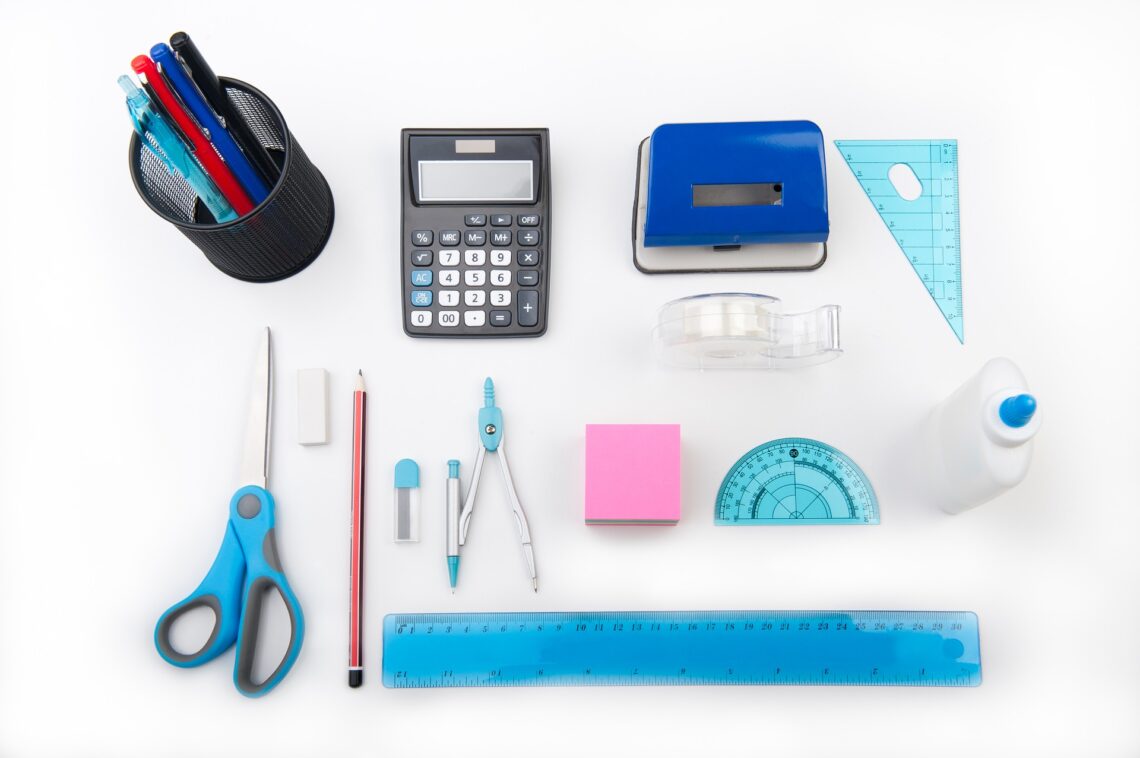
Virtual School Organizing
When you are doing Virtual Schooling or Homeschooling, it is really important to be organized. Organizing your Virtual School space means that you will know exactly where your supplies are when you open up that curriculum to teach. If your virtual school area is organized, your children will know exactly where to find things and can be taught to put them away.
If you are not careful about organizing your virtual school space, learning supplies will take over your entire house!
Staying Flexible with our School Room
In our previous home, we used the family room as our school room. It was right off of our kitchen so it was in a central location. This meant I could do my normal homemaking tasks and keep an eye on the schooling.
Also, because we were near the kitchen, we could clean up the art and science projects in the kitchen.
I’ve already encouraged you to have school happen in a centralized place in your home. But, that doesn’t mean that you have to completely redecorate your home to look like a classroom.
I chose to use patterned boxes to hold school supplies, rather than going for the typical bright primary school colors.
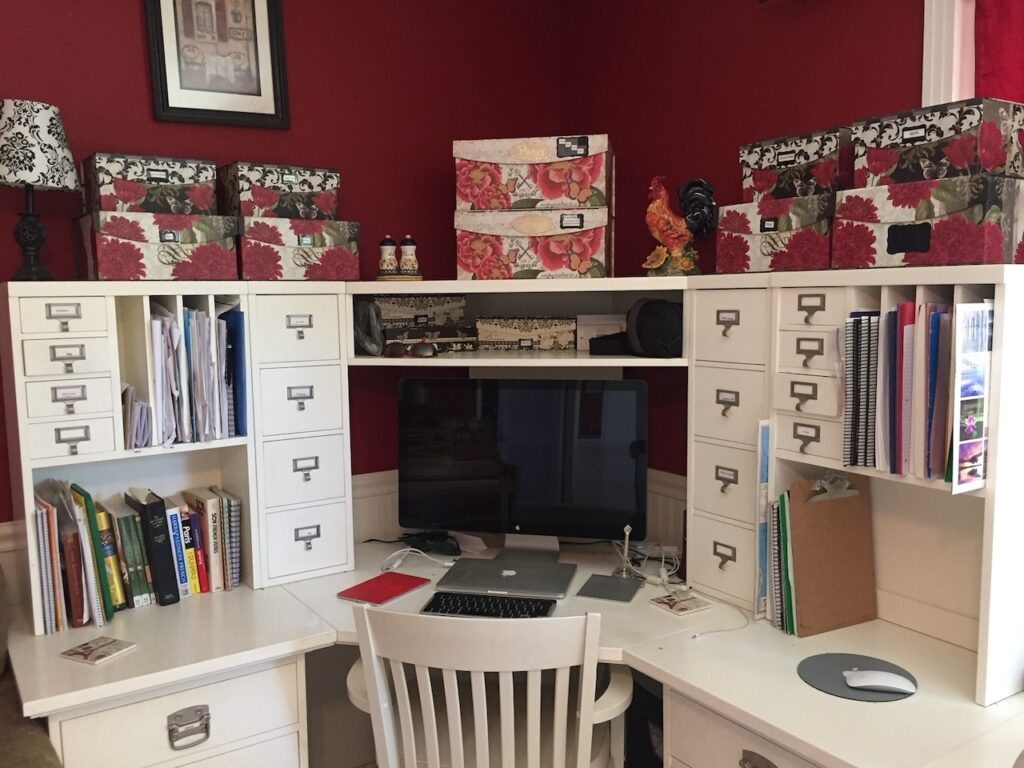
It is important to keep track of all the learning supplies, books, papers, and art supplies. When you are organized for virtual school, it means that you and your children are spending more time on learning and less time trying to figure out where things are.
Trust me, you will want to be as organized as possible in the virtual school room. It can mean the difference between a good day and a bad day.
Learning Space Ideas:
Desk or Table
If you don’t have a desk available for use by your child full time, that is ok. You can use a kitchen or dining table. I used the kitchen table for years. We had one which had tile on the top so it was really easy to keep clean. I never had to worry about art projects being too messy and ruining my table.
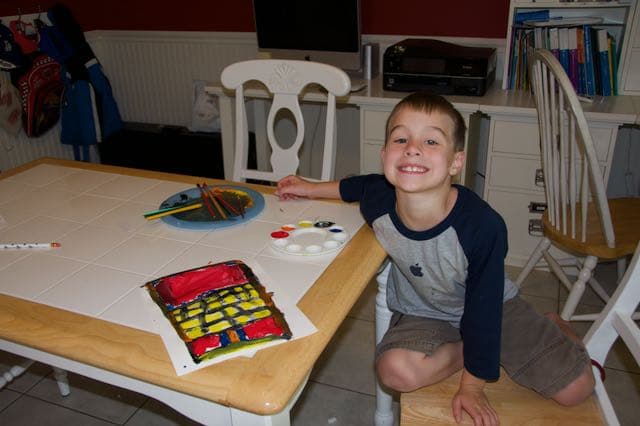
The key is to train your child to clean up his area after school and before meal times. This should be your child’s job. Even Kindergarten students can put things away themselves. Have a consistent place for the items to go, and you will be able to have the table go from school table to eating table every day!
Another idea could be to purchase a folding, portable desk which could be set up in a common area. If your child has a desk in his room already, you could also move that desk into a centralized location in the home. You may find that you can reorganize your family room to allow for a desk along the wall. Do you have a sturdy folding table in your home? If so, you could set that table up flush against a wall to set up as a makeshift learning area.
Once your child enters middle or high school, having a desk will be a better option for him. I recommend that each child has his own desk or space available once he reaches middle school. We transitioned each of our children gradually to their own desk and computer as they got too old to sit on my lap and do their lessons on my computer!
We had to get creative with this one in our old home. For a few years my older son shared an office with his dad. We had run out of desk space downstairs, so we needed to make do. It was amusing to see them both working together on their own desks.
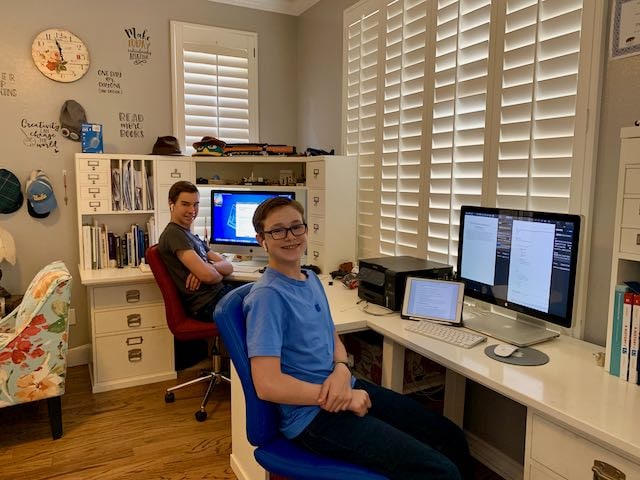
Our current school room is in full view of the kitchen. It is in a separate room off of our family room, but I can see right in because we have open cutouts between the family room space and the school room space. It is just the right amount of separation for us!
I would highly advise you to keep the learning space in the center of the home. This will make supervision so much easier! If you can have a desk or table that your child can use, you will be in good shape.
Storage of School Supplies:
Now that we have discussed some learning space ideas, let’s talk about where to put all the school supplies. There will be a lot of them, so you need to make sure they have a home.
Bookshelf:
A Bookshelf is a great piece of furniture to help you organize your virtual learning space. Make a shelf available on a centralized bookcase for each child’s learning materials. Students should know exactly which shelf is theirs, and be able to put their books away and get them out.
If you have teacher guides, you may consider putting those in a separate location which only you access. This will ensure your enterprising young student doesn’t grab the book with the answers instead of their workbook!
For young children, make sure the shelf is either color coded or labeled with their name. You can also label the spine of the books themselves with your child’s name. That way if you have multiple children, they will know which English book is theirs.
If you have a desk for your student, then you can have your child keep their books on their desk or in a drawer. Just make sure that they are diligent about putting the books back in the correct location. You do not want that English novel disappearing in their room never to be found again…
File for Papers:
In order to keep records for your school you will need to have a location to hold documents, assignments, report cards, and other learning pages for your children. I recommend you set aside on file drawer in your home for this.
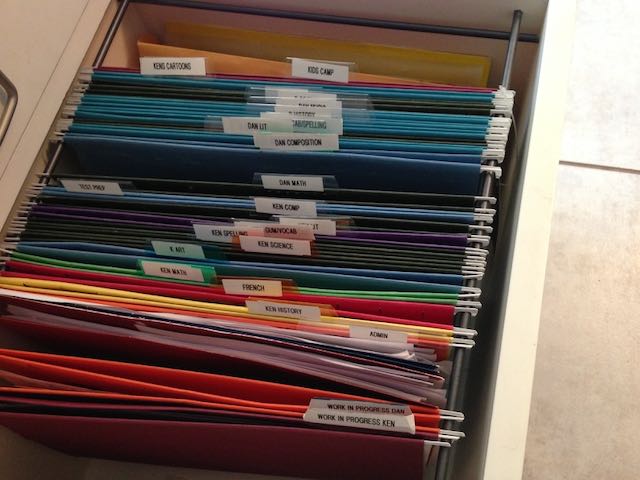
You can give each child a color and make all the files associated with that child the same color. Or, you can use another organizing system. My folders were color coded to go with the colors of each subject. Language Arts in k12 was always purple, so all the associated files were purple.
Then, you will set up labels for each subject. Put your child’s name or initial in front of the subject. For example, my folders have D-English, and K- English. You’ll want one file for test scores and report cards. Make sure each child has their own set of files for each subject. Then, organize them by student name.
In my drawer, Dan’s files are grouped together, followed by Ken’s. Once your child enters high school, the files can be transitioned to their desk, except in the case of report cards and test scores.
Keeping organized records will help you to stay calm and prepared as a homeschooling parent. You will know exactly where those report cards are. You will easily be able to choose work for your student’s portfolio, because the assignments are filed in the correct file folder according to subject. At the end of the year, go through the files, keep the work that is special to you or your child, and then recycle the rest. You will then have a set of empty files ready for next year’s work.
Boxes and Bins:
These are my favorite tool to organize your virtual school supplies and manipulatives. When my students were in early elementary school, we received boxes and boxes of supplies. Art supplies, math blocks and counting aids, science experiment equipment, globes and maps, phonics tiles, and so many little phonics reading books! It looked like a highly colorful school room exploded in my dining room every fall when the supplies arrived. Since my school room also doubled as our kitchen eating area and our family room, it was necessary to find a home for these primary colored supplies in a way that maintained order and organization, and didn’t clash with my French style of decorating.
I went to my local Michaels and found some lovely printed cardboard storage boxes of various sizes. There were so many options available to purchase, and I found it easy to pick a style that would coordinate with the red, black, and white in my school room. I bought many sets of the same pattern, which ended up being a great decision.
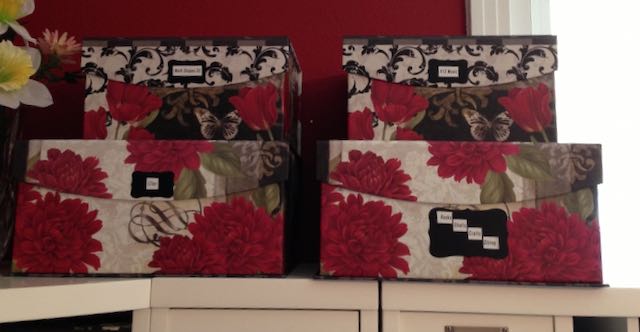
Those floral boxes have been in use for many years. I was able to use these boxes to hold the manipulative and supplies. I would label the box with the name of the student and also of the subject (D-Math for example) and exactly what was inside it, so that when I needed to find the math manipulatives, I didn’t need to open every box. I had bins of markers, crayons, colored pencils, read aloud novels, science experiment supplies. Because each bin was labeled first with the student name, and then with the subject, it was easy to find the supply I needed for a lesson in a minimum amount of time.
Beautiful boxes and bins labeled with their contents will be so useful to you as you establish an organizational system for your virtual school room. Many craft stores will have boxes and bins on sale in the month or two before school starts, and also in the month of January. If you find a pattern you like, I recommend you purchase as much as you think you might need, and then just a bit more. It is ok to have some empty boxes available for future supplies.
I hope that these ideas can help you think creatively about how to organize your school area for success. Excellent organization of your virtual school supplies and materials can mean the difference between a great day and a bad day. Let’s set ourselves up for success by organizing our virtual school learning spaces!
I would love to hear how you organize your child’s learning space. Please feel free to share down below what you’ve done!
Jennifer Douglas
Jennifer Douglas is an author, patient advocate, and DCIS breast cancer survivor. After navigating her own breast cancer journey in 2019, she began writing and encouraging others who were newly diagnosed. Her resources include her book, "A Breast Cancer Journey: Living It One Step at a Time," and her online support course, "Encourage: Breast Cancer and Beyond." Jennifer also actively supports patients through her online presence and direct involvement in communities and support groups, offering guidance and encouragement every step of the way.


You May Also Like

Bare Minimum Homeschool Day
September 18, 2020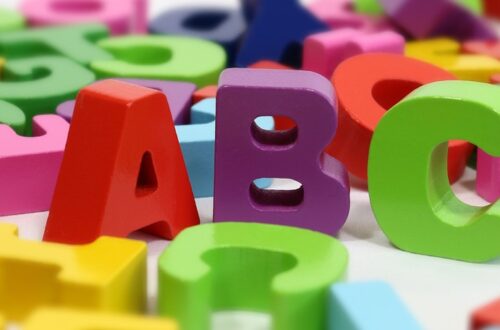
Virtual School Curriculum Choice : Why k12, Part 2
October 16, 2020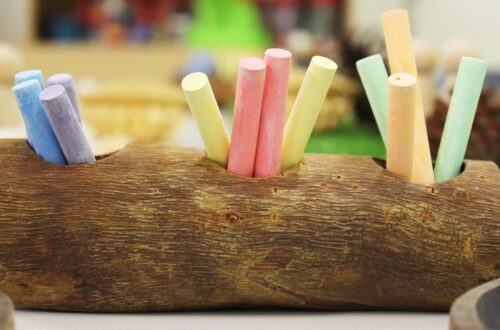

8 Comments
Mikayla
I love this! It’s so helpful, especially right now with covid!
Jennifer Douglas
Thank you! I hoped it would be useful. I can get away with disorganization in some areas of my life, but not with school materials!
Pea Green
During home learning (I refuse to call what we did home schooling, it really wasn’t), the boys worked at the kitchen table and I had piles for each day of stuff they needed to do and what they’d completed. I would spend an hour on Fridays organising it all and labelling things and writing a semi-timetable. Working full time(ish, I do 90%) it was the only way to keep track.
Being organised was key and I think if they hadn’t gone back to school last month, I’d have had to step it up a level and maybe reduce my hours.
Jennifer Douglas
Kitchen table home learning (love that term) is a great way to approach it! We did that for many years. It sounds like you were able to come up with a system that worked well for you and the boys during this temporary time. Organizing can really save our sanity as we try to be productive and work at home, while managing home learning…
Mary Stephens
What a wonderful space!
Jennifer Douglas
Thank you! I loved that room! It was so multipurpose.
Sierra
Great tips here, especially the point about stay flexible and using storage bins! We are doing remote learning for our 5 year old and I really didn’t want to fall into the trap of spending a whole lot buying new things, including a desk. We are currently using a second dining room table. It’s easy access to the kitchen and while we wish she could have an entire area just for herself, we’ve got to make things easy and flexible as our 2 year old is also in the mix. Some days it’s the kitchen table, other days it’s the living room. Whatever works! Thanks for these wonderful suggestions and images for examples!
Jennifer Douglas
We ended up piecing together our furniture for home learning over many years. It helped us spread out the cost. As a kid grew old enough for their own desk, we would add one. But, I still find us using the couch, even in high school! So glad that these ideas were useful to you. Hope that your year of remote learning is going well!